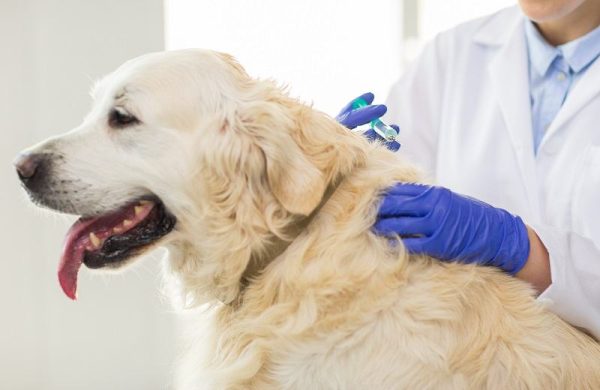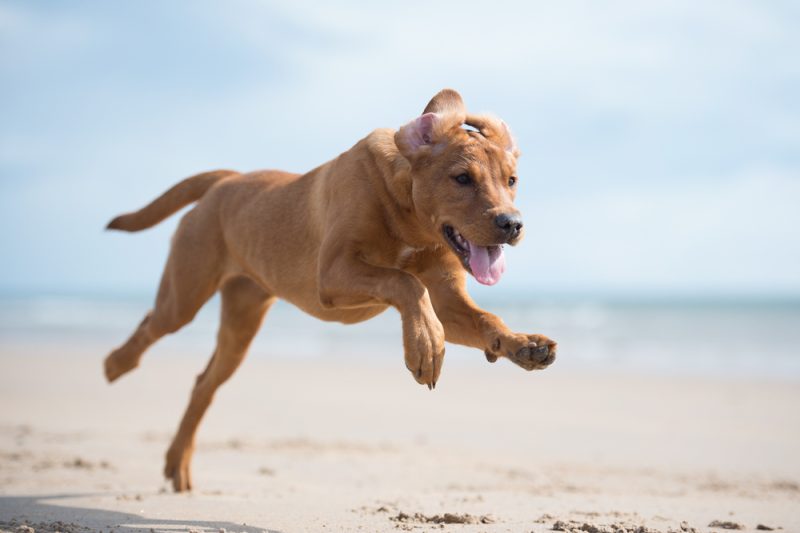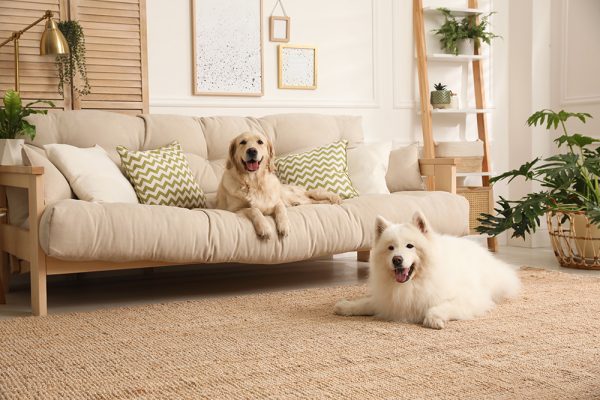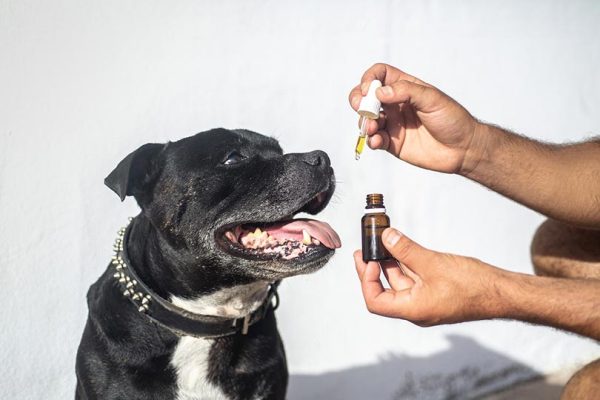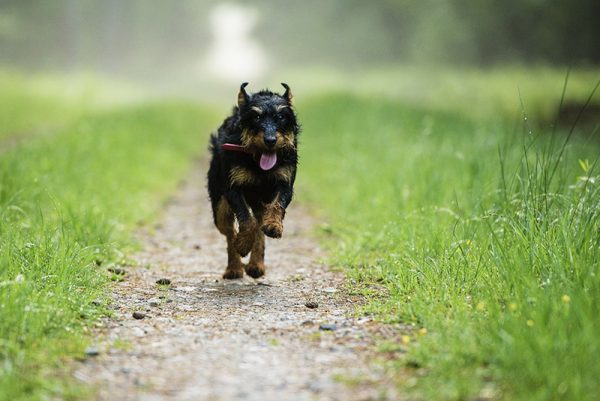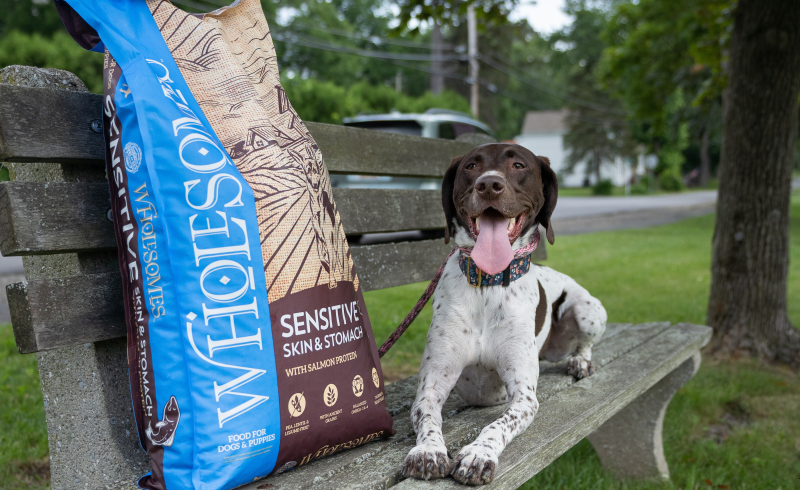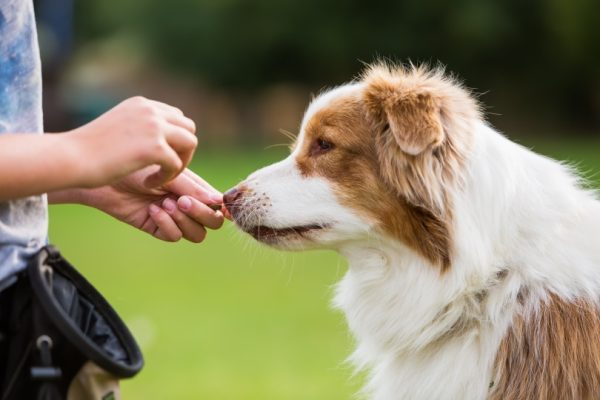There is an unfortunate stigma that surrounds dogs who wear a muzzle, often invoking beliefs that dogs who wear muzzles are highly dangerous and aggressive dogs that will bite you when given the chance.
However, this is not always the case.
Dogs can wear a muzzle for a variety of different reasons, and for some owners, it is a way to be responsible and proactive regardless of whether their dog is showing signs of aggression or not. Muzzles can also be used as a negative way to control or discipline a dog, which is when muzzles can be off-putting.
When used correctly and comfortably for a dog, muzzles can be beneficial to dogs and their owners. Perhaps you are training your dog, or you have to abide by state-specific laws. Let’s explore more on why and when dogs should wear muzzles.

Muzzles On Dogs
A muzzle is a piece of protective gear that your dog wears to secure their snout. There are different types of muzzles suitable for various dog breeds, and most of them will strap around your dog’s head. Using a muzzle on dogs is quite controversial amongst dog owners. Some owners see it as a cruel thing to do to dogs, while others who find a muzzle necessarily see it as a good thing that does not harm a dog when used correctly.
The truth is that some dogs do require a muzzle, and it is even a law in some states and towns that certain dog breeds are required to wear a muzzle. Muzzles should be used for the right reasons, and not as a form of punishment for your dog.
If your dog is barking or chewing furniture, muzzling them will only make the situation worse, while provoking a sense of fear and anxiety when a dog is wearing a muzzle. Instead, a muzzle should be used beneficially and positively so that does not harm your dog. If the muzzle is causing the dog harm and the dog is clearly in distress, then it should not be worn.
This is why it is important to condition and desensitize your dog to a muzzle over time, and the best time is to start when they are still a puppy. Positive reinforcement is essential during muzzle conditioning, as this will allow your dog to associate wearing the muzzle with something positive.
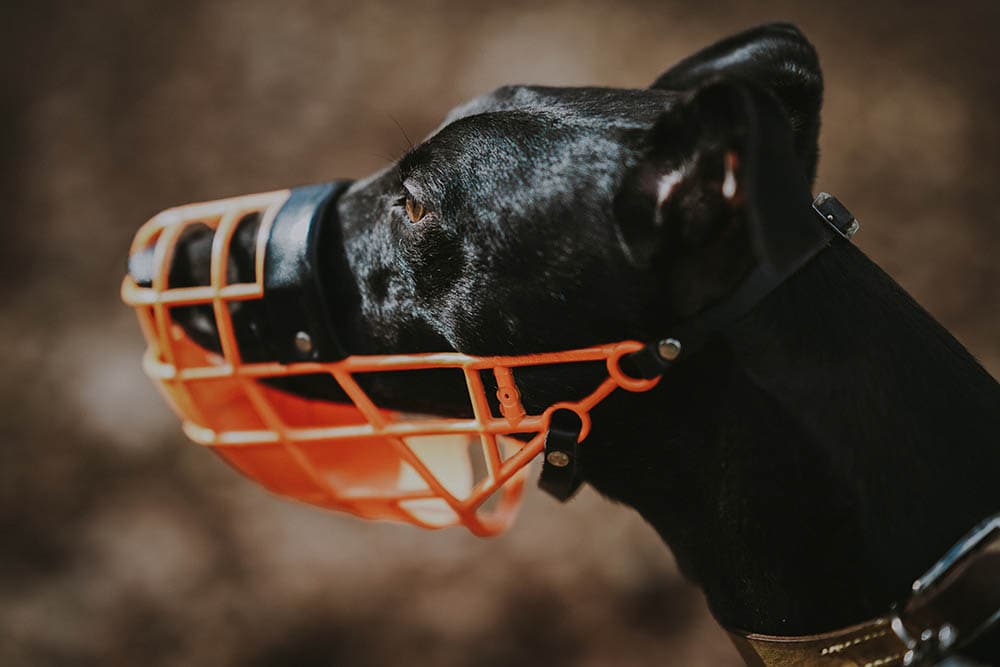
Why Do Dogs Wear Muzzles?
There are several reasons why a dog will wear a muzzle, from having a history of aggression to needing to wear one due to a law.
1. History of Biting People or Other Dogs
Dogs who have a history of aggression or biting may need to wear a muzzle. The muzzle acts as a barrier to prevent the dog’s teeth from contacting another dog or person. If another dog was to run up to your dog regardless of whether they are friendly or not, the muzzle stops your dog from biting the other dog, thus preventing any injuries.
This is also beneficial in situations where dogs will bite people who pet them, as some dogs do not do well when they are handled or approached by strangers.
2. The Dog Is Nervous with Strangers & Unfamiliar Places
If a dog has had a bad experience with people in the past or they get anxious and stressed when meeting new people or going to new places, then they may react by biting. A muzzle can help control this and ensure that the dog does not react by biting while being used as a form of safety.
A frightened dog is more likely to snap or become defensive, so keeping a muzzle on them can keep you and other people handling your dog safe.
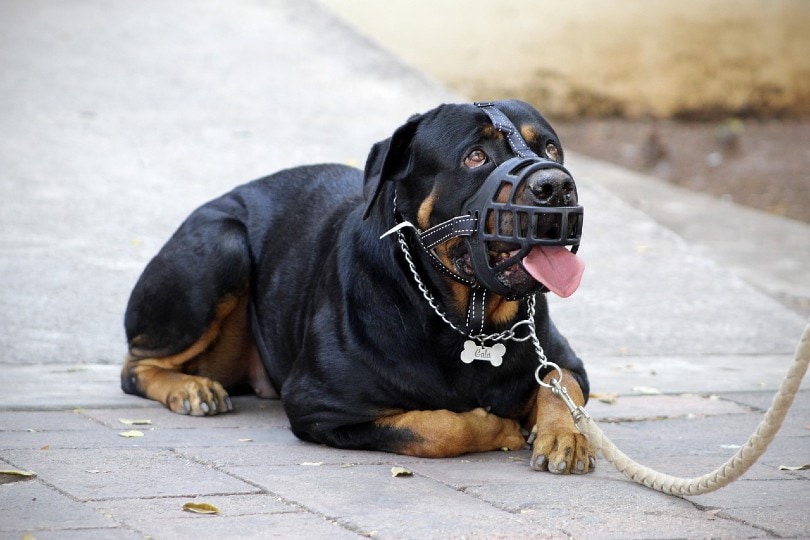
3. Breed-Specific Laws
Certain cities and states have a law where certain dog breeds must be muzzled when out in public regardless of whether the dog is aggressive or not. This is known as breed-specific legislation (BSL), and it usually applies to breeds such as Greyhounds in Northern Ireland and Australia, while Hounds, the Pitbull Terrier, and dogs like the Japanese Tosa need to be muzzled in the United Kingdom.
In places such as Toronto, Canada where a dog must wear a muzzle when out, you can be fined if you are caught walking your dog in public without a muzzle on them.
4. Reduce the Handler’s Stress
If you have recently gotten a new dog, or you are unsure of the dog’s history of aggression, then you can introduce a muzzle for your safety. This can also be beneficial if you want to take your dog out in public and not have to worry about your dog biting another person or dog.
It is a great way to reassure yourself and protect others in case your dog is likely to bite others.
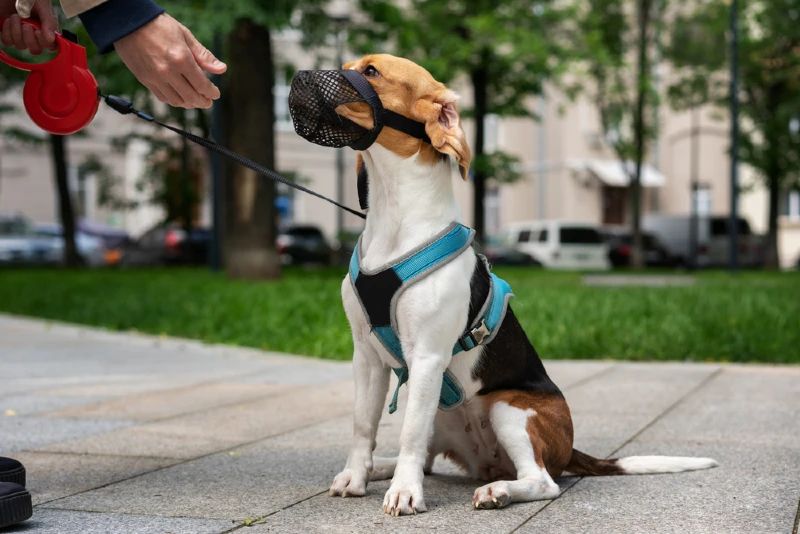
5. Condition the Dog for Vet Visits & Grooming
If your dog becomes stressed during vet visits or at the groomers, having them get used to wearing a muzzle during these types of examinations can make it a more comfortable experience for everyone involved.
Some dogs will react by biting if they are being handled by a groomer or veterinarian, which can make it difficult for your dog to be handled. This is why it would be beneficial to train or condition your dog to wear a muzzle so that when professionals need to handle your dog, you can keep a reactive dog from biting them when frightened.
Even if your dog is generally friendly, conditioning them to wear a muzzle can prevent accidents from happening, where a dog will snap if they are feeling stressed.
6. The Dog Is Recovering From Surgery or An Injury
Dogs who are in pain are more likely to bite, so using a muzzle can be used in emergencies. The muzzle can also prevent your dog from tearing at stitches or wounds if they are injured or have come out of surgery, and it is useful if your dog does not like Elizabethan collars.
A muzzle can help protect the veterinarian who is examining your dog’s wounds from being bitten when the dog is getting defensive from having their injury touched.
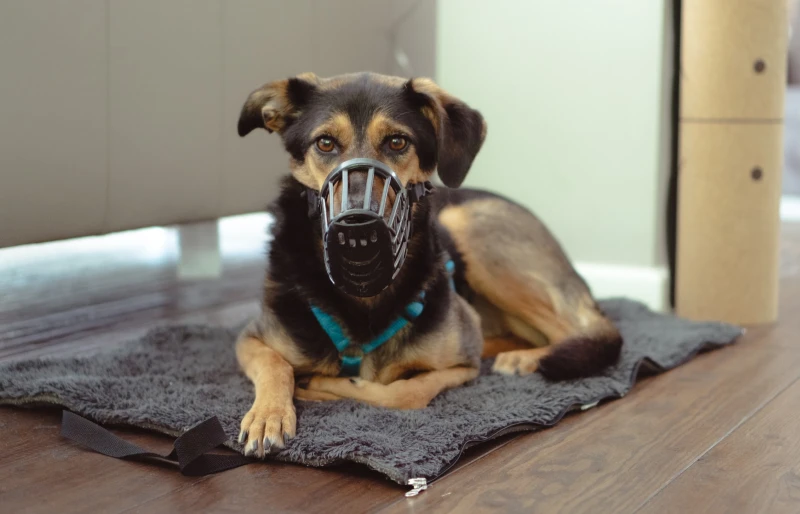

When Should Dogs Wear Muzzles?
Unless it is required by law in your state or city for your dog to wear a muzzle, the rest of the time it is up to you, a veterinarian, or a dog trainer to decide whether your dog is fit to wear a muzzle.
Get in touch with a veterinarian for advice when it comes to whether or not your dog might need a muzzle.
Did you know you can speak to a veterinarian without having to travel? Just head over to PangoVet. It's our online service where you can talk to a vet online and get the advice you need for your pet — all at an affordable price!

Some common situations when a dog would need to wear a muzzle include:
- As a precaution for other people and dogs in public.
- During grooming or veterinarian examinations.
- During walks, hikes, runs, or public places where your dog may become reactive and bite.
- If the dog has not been socialized properly or the dog’s history of aggression is unknown to the handler.
- During training.
- The dog is prone to biting and shows aggression towards other dogs and people.
If you are unsure whether or not your dog should wear a muzzle, it is best to speak to a professional dog trainer or behaviorist to find out whether a muzzle is necessary for your dog or not.
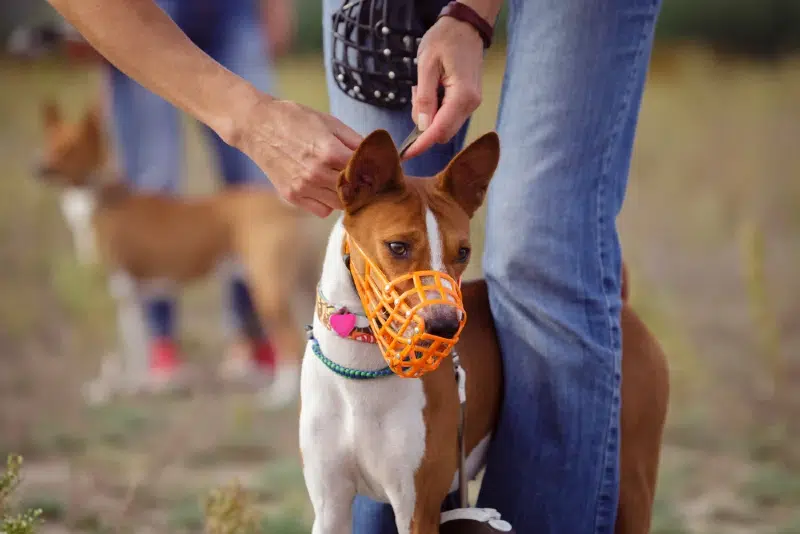
Making the Muzzle Comfortable for Your Dog
If you do decide that your dog should be wearing a muzzle, it is essential to find the right muzzle for your dog. Some muzzles are uncomfortable and can even be harmful to your dog.
If the muzzle seals your dog’s mouth closed, there is no space for them to open their mouth to pant or drink water. This can be dangerous and lead to dehydration, especially if your dog is walking and exercising with this type of muzzle on.
The basket muzzles that have room and breathing space for your dog to open their mouth slightly and pant is a good choice. It can either be made from metal or silicone, depending on the reason your dog is being muzzled and which is most comfortable.
It is important to ensure that the straps of the muzzle are not digging uncomfortably into your dog’s face or neck, as this can make it unpleasant for your dog to wear, and even painful. The muzzle should be the right size and shape according to your dog’s snout so that it fits correctly.
It can take time for your dog to get adjusted to wearing a muzzle, so you will need to train your dog to get accustomed to wearing a muzzle during certain activities or situations. You can also get a professional dog trainer to help get your dog used to wearing a muzzle.
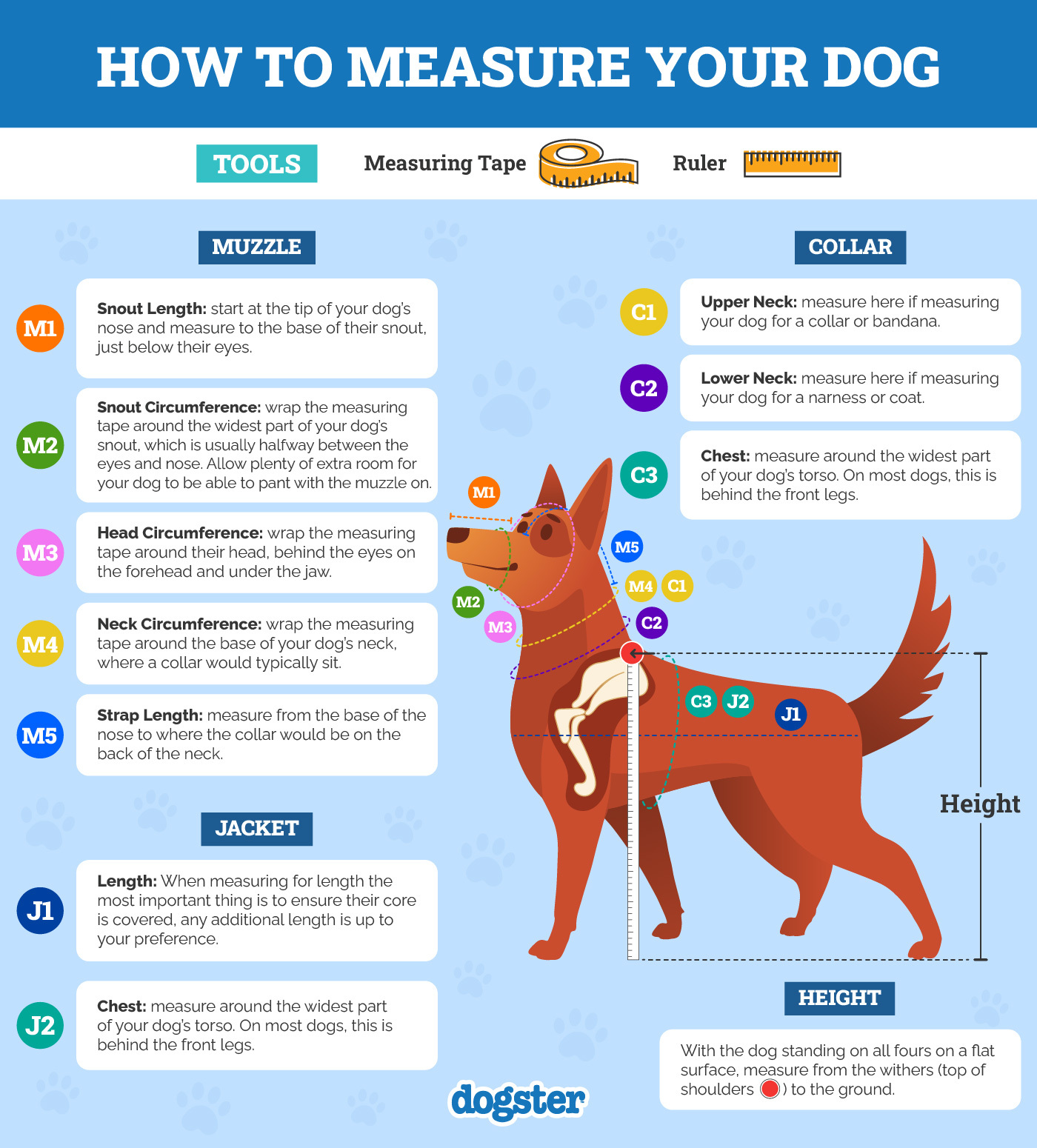

Conclusion
Muzzles are necessary for certain situations and are a part of being a responsible owner. Aside from the negative association of muzzles only being used on attack dogs, muzzles can also be used to prevent others from being injured by friendly dogs who may bite when they are defensive, or as a protective measure.
A muzzle can also be worn during training, grooming visits, or when your dog is being examined by a veterinarian. The muzzle should fit securely yet comfortably on your dog’s snout, and not be used to punish or affect your dog negatively.
Featured Image Credit: Vasilii Aleksandrov, Shutterstock



